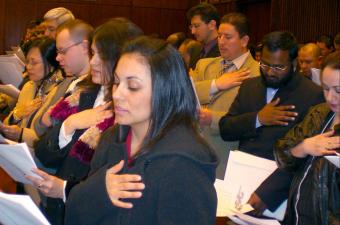Integration Policy
Recent Activity
This report examines granting local voting rights in municipal elections to resident non-nationals.
More than half of all the states in the world, countries of immigration as well as emigration, now tolerate some form or element of dual citizenship. This report goes beyond statistical trends to the heart of these changes and how best to think through the policy answers.
Over 100 million migrants live in the more developed regions of the world, including nine million in Northern Europe, 22 million in Western Europe and 38 million in the United States. This report takes a closer look at the challenges of immigration for Western countries.
This fact sheet examines the dramatic increase in U.S. Citizenship and Immigration Services processing times for naturalization applications resulting from an overall increase in applications during fiscal year 2007.
This policy brief analyzes the effectiveness of school language policies across 14 immigrant-receiving countries. It examines various methods countries have adopted to help immigrant students gain proficiency in the language of instruction, identifies contexts that seem to elicit positive outcomes, and provides recommendations.
This policy brief examines the social mobility prospects of the children of Turkish immigrants across five EU nations—Austria, Belgium, France, Germany, and the Netherlands—and seeks to identify institutional arrangements that promote their academic success and transition into the labor market.
This report examines the ways in which governments can make the emerging global mobility system work better for European migrant-receiving countries, their developing-country partners, and the migrants themselves.










